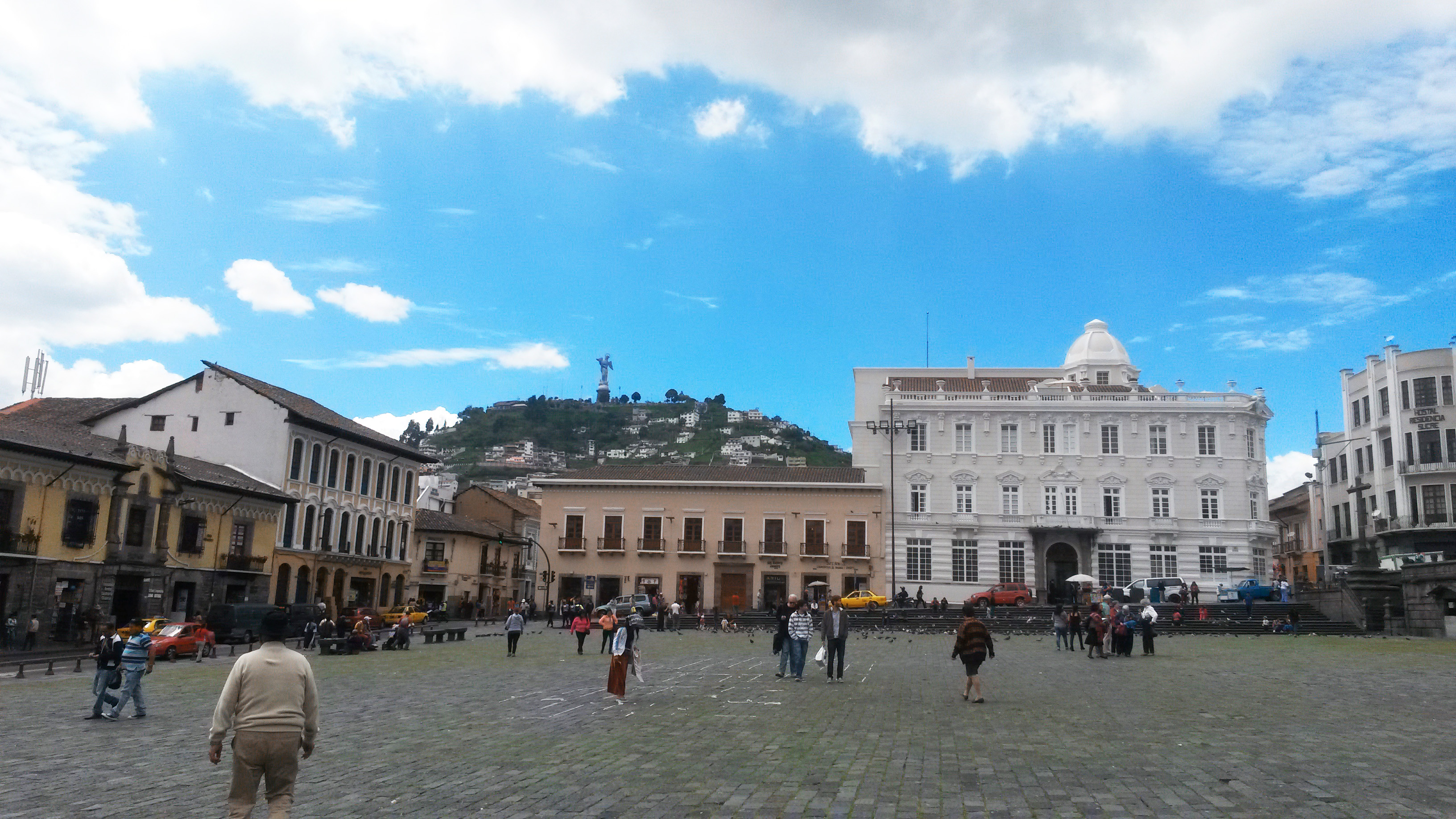Have you planned a trip to Ecuador, this amazing country where volcanoes rub shoulders with cities and which is partly located in the Amazon rainforest? The capital and largest city in terms of population, Quito, is a must during your stay.
To help you prepare for your visit, here is a complete guide to the city’s must-sees and excursions not to be missed in the surroundings. Hotels, restaurants, transport… find out everything you need to know about Quito.
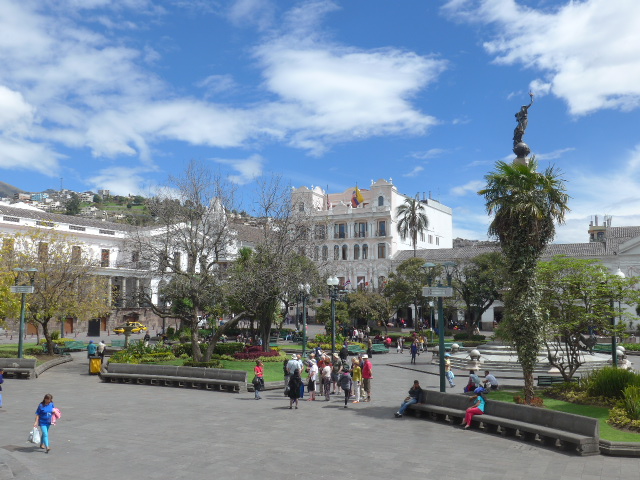
What to visit in Quito?
1. La Ciudad Vieja
La Ciudad Vieja, or “old town” in French, is the historic centre of the city of Quito. This site has been listed as a UNESCO World Heritage Site since 1978. It covers 3.2 km² and is the largest historic centre in Latin America in terms of area. Two different atmospheres coexist there, between the streets which have retained their colonial style and those which are more recent and arranged in a more modern style. Take the time to stroll through the oldest streets and contemplate the pastel-coloured dwellings and the typically colonial flowered balconies. This atmosphere clearly contrasts with luxury hotels and restaurants in a contemporary style.
The Ciudad Vieja is also the best-preserved historic centre in the whole continent. You will see many ancient historical monuments as well as religious buildings which are to be visited absolutely.
Also take a stroll along Calle La Ronda, a street that is also worth seeing for its picturesque side and its animation. A haven for painters and poets in the 1930s, this colonial alley is today the meeting place for bohemians and romantics. This is also where you can buy handicrafts, for example wood or metal.
2. La Mitad del Mundo
Did you know that Ecuador is located between the southern hemisphere and the northern hemisphere? Twenty kilometres from Quito, you can have fun standing with one foot in each hemisphere, and why not make a souvenir photo! The Mitad del Mundo is a tourist site accessible by bus, which is the recreation of a colonial village where you can stroll, from one craft store to another.
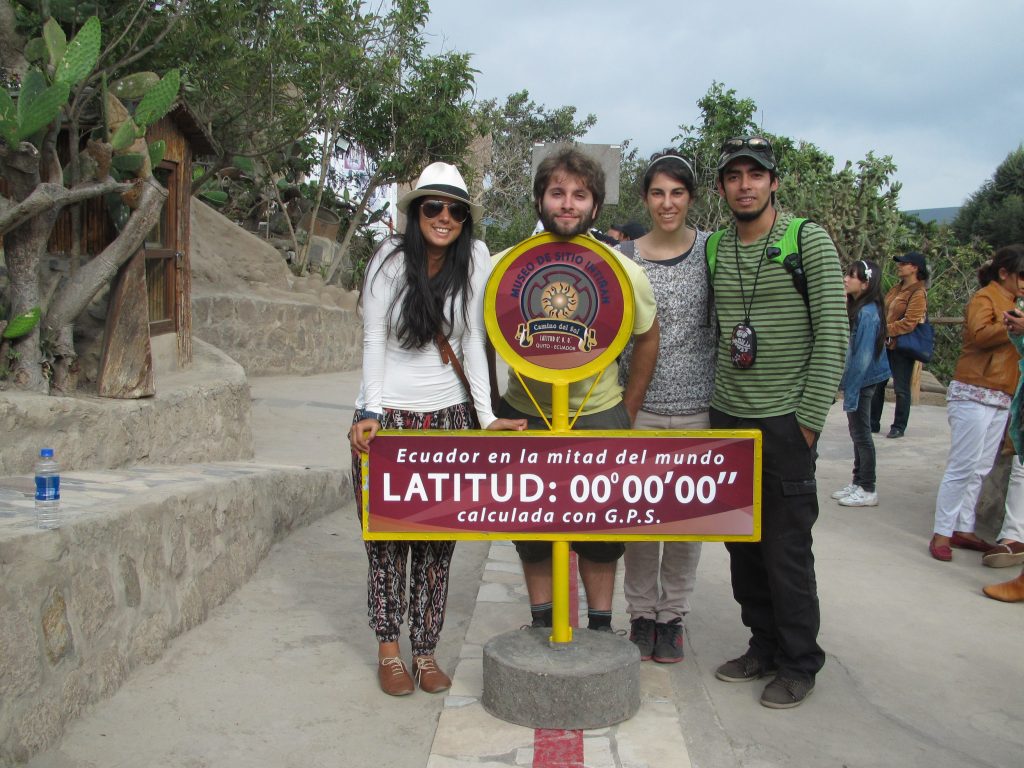
The monument “La Mitad del Mundo” is built on a yellow line drawn on the ground which symbolizes the imaginary line of the equator. It measures around thirty meters and was built in the 18th century, following an expedition led by French explorers who defined this place at latitude 0-0’-0. In fact, scientists later found out with much more precise geolocation instruments that the imaginary line of the equator was slightly further away, exactly 240 meters away. But that does not change the experience: officially, it is this famous yellow line that sets off half the globe!
Near the Mitad del Mundo is the Inti Nan anthropological museum, which will teach you more about the different ethnic groups in Ecuador and certain animal species. It also offers workshops on the theme of gravity, since when you go from one side to the other of the equator, it reacts in the opposite way. For example, you may find yourself trying to balance an egg on a screw!
3. La Plaza de la Independencia
This square also called Plaza Grande constitutes the heart of the city of Quito. This is where you can see the magnificent Palacio de Carondelet, a 19th century monument that is both the seat of the Ecuadorian government and the residence of the President. The Palacio de Carondelet also houses an art museum, which displays the works of local artists.
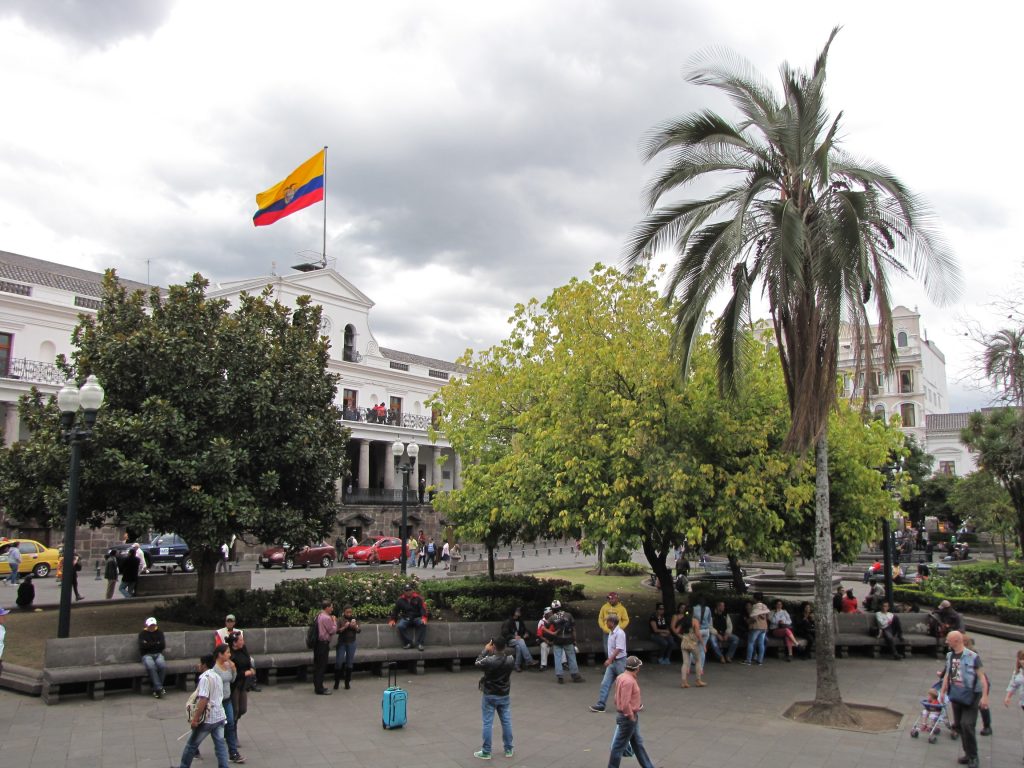
The Plaza de la Independencia owes its name to the Independence Monument which has been erected at its centre. This memorial was built in 1909 to celebrate the country’s independence, which had been declared a century earlier. It is charged with a strong symbolism. If you look closely, you will see a wounded lion embodying the defeated Spanish army, but also a condor, emblem of Ecuador, associated with the goddess Libertas representing freedom granted to the people.
4. La Iglesia de la Compañía de Jesús
This Jesuit church in San Francisco Square is one of the most beautiful in the country. Although its facade, built in volcanic stone in a baroque style, is not absolutely dazzling, do not go your way without entering it! It is inside that this church reveals all its beauty and all its richness. Its altar is beautifully decorated and covered with 23 carat gold leaf. This building is also nicknamed “the Sistine Chapel of Quito” because of the very beautiful frescoes that stretch over the ceiling of its vault.
5. The San Francisco Church
In San Francisco Square is another church with the same name, which is one of the oldest churches in Quito. It dates from the end of the 17th century and its facade is surprising since it is built in different architectural styles. San Francisco Church is one of the most richly decorated in the country. She is particularly known for her sculpture of the winged virgin, one of the emblems of Quito, which is placed on the altar.
6. La Basílica del Voto Nacional
The Basílica del Voto Nacional is a magnificent monument in the Gothic style, which will no doubt remind you European cathedrals, transposed into Latin American culture: for example, the gargoyles on the facade are not lions or dragons, but typically Ecuadorian animals, such as turtles, armadillos, dolphins and iguanas. You can climb one of the towers of the basilica to contemplate the city from 117 meters high.
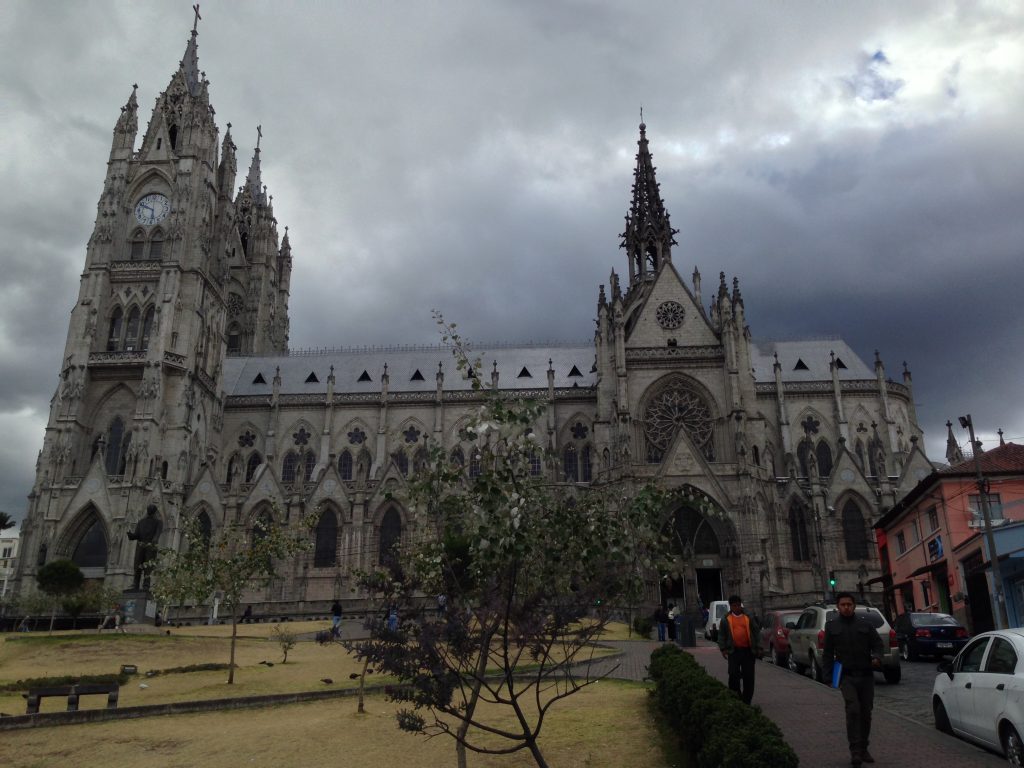
7. El Panecillo
Wherever you are in Quito, you can see Panecillo hill (which means “little bread” in English), which forms a natural border between the south and the north of the city. El Panecillo reaches 3,035 meters in height and offers very beautiful panoramas of Quito, in particular the historic centre and its magnificent monuments. You can also find there a rather impressive sculpture of the winged virgin, made from 7,000 pieces of aluminium!
8. The San Agustín Convent
This historic site has a double interest. First, it is a fine example of neo-Gothic architecture, but also because it is the place where the first independence treaty was signed in August 1809. It is attached to a museum dedicated to the works of the painter Miguel de Santiago.
9. The Guayasamín Museum
This museum is located in the house of the painter Oswaldo Guayasamín, a well-known painter in Ecuador who lived in the 20th century. It is therefore in an exceptional place, with a magnificent view of the city of Quito, that you will be able to observe some of his works, as well as his personal collection of objects dating from the pre-Columbian era and found during archaeological excavations in the country: ceramics, funeral masks, pieces of bone, objects of daily life etc.
10. La Capilla del Hombre
This museum was built on the initiative of the painter Oswaldo Guayasamín, who saw it as a tribute to the human race. Visiting this amazing site will allow you to learn more about the different peoples who have populated Latin America from the origins of the territory to the present day. You will also see the rest of the painter’s works, including his most committed paintings, through which he denounces misery, poverty, the exploitation of peoples and dictatorships, universal themes.
11. El Parque La Carolina
If you’re coming to Quito with kids, be sure to spend at least one afternoon at La Carolina Park. This green space offers many possibilities for activities: for example, you can take a bike ride, rent a kite or even a pedal boat. You will also find the Quito Vivarium, the Natural Science Museum and the Botanical Garden. The latter measures almost 18,600 m² and will allow you to discover the diverse flora and fauna of Ecuador that live in marshes, humid forests or the Andean highlands. In the orchidarium, visitors can observe almost 2,000 species of orchids, while part of the garden is dedicated to bonsai trees, with more than 100 different plants.
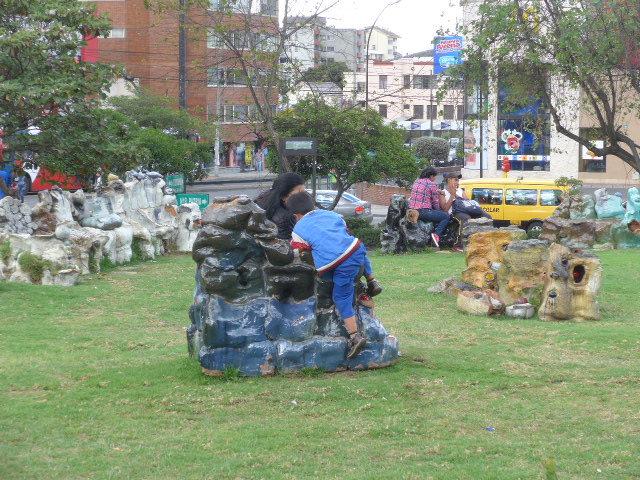
12. El Parque El Ejido
This park is the third largest in Quito. It is especially worth a visit for its craft market which takes place on weekdays and where you can buy souvenirs from Ecuador at good prices. At weekends, it is the artists who exhibit within the park and sell their works.
13. La Floresta District
La Floresta is known as the hipster district of the city. If you are looking for a good place to eat vegan or a trendy café where you can have a well-deserved break, you will find what you are looking for here, between a restaurant and an artist’s studio. It is also in this district that you will find unusual shops such as an orchid shop! La Floresta district is also famous for its street art.
14. The Guapulo District
Guapulo is certainly one of the most charming areas of Quito. Allow yourself some time to stroll along its alleys lined with traditional white houses. Follow the Camino de Orellana, from where you can enjoy a very beautiful panorama of the city, before stopping to eat in one of the few restaurants.
15. The San Francisco Market
This market was the first to be set up in Quito in 1893. For tourists and locals alike, the San Francisco market is a veritable gold mine for finding fresh, local and typically Ecuadorian products. For example, you will find more than sixty different fruits there that you will never find in Europe, such as soursop, sucrin, cherimoya or babaco. You can also taste typical dishes such as “chocos con tostado”, a specialty made from vegetables grilled in salt and oil. Finally, on the drinks side, you will find exotic fruit juices such as tamarillo.
Day Trips around Quito
1. The Guagua Pichincha Volcano
This still active volcano is located just ten kilometres from Quito. To get there, you can take the Quito Cable Car, or “TeleferiQo” which will take you to the volcano, almost 4,053 meters above sea level. From the cable car you will have a wonderful view of the surroundings, including the city of Quito and the volcanoes that surround it. Once on the volcano, you can hike on one of the beautiful trails that start from the cable car station. If you have the soul of a sportsman, climb more than 4,802 meters on the edges of the crater of the volcano: you may have the chance to see the fumaroles that escape. Remember to take a picnic with you to spend the day there, then return to Quito using the cable car again. At sunset, the panorama is splendid!
2. Cotopaxi National Park
Cotopaxi National Park includes the volcano of the same name, which is still active today. It rises to almost 5,900 meters above sea level and is one of the most beautiful natural sites in Ecuador. Spend the whole day there to get the most out of it and walk on the hiking trails. One of Cotopaxi’s must-sees is the Limpiopungo lagoon, which sits directly on the side of the volcano and offers breath-taking panoramas of Cotopaxi and the surrounding area. You can choose to book a guide to accompany you during the walk: he will introduce you to the very rich flora and fauna that lives in the national park.
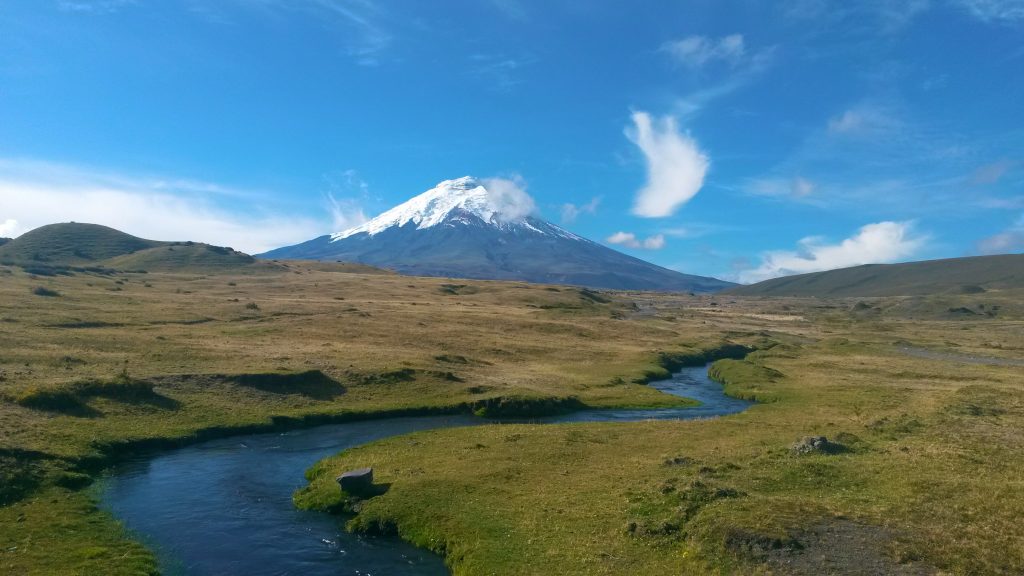
3. The Pululahua Volcano
This volcano is now extinct, so it is entirely possible to enter inside the crater. Some farmers have even settled there permanently. This site benefits from an incredible biodiversity, both in terms of its fauna and flora: you can see more than 2,000 different plant species, including rare plants, as well as birds, animals and various insects. For this reason, but also thanks to its soils which are very suitable for agriculture, the Pululahua volcano has been classified as a geobotanical reserve. But this is not the only interest of this natural site: it is also a perfect place to hike, whether on foot or by renting a bicycle or a horse.
The Pululahua volcano is accessible by bus from Quito. To get there, take the same bus as the one that goes to Mitad del Mundo, then allow around a quarter of an hour to reach the entrance to the geobotanical reserve. If you want to descend into the crater, you will need to plan three-quarters of an hour more and above all, be equipped for hiking.
4. The Otavalo Market
You will hear that the Otavalo market is a must-see trip while traveling in South America, and indeed, it is worth a visit. Otavalo is known throughout the country for its colourful textiles and it is in this small mountain town that you will find the best weavers. From these textiles, ponchos, rugs and even hats are made, which are sold on the Otavalo market alongside leather goods, handicrafts and … cattle! The Otavalo market is also the largest market in all of Latin America.
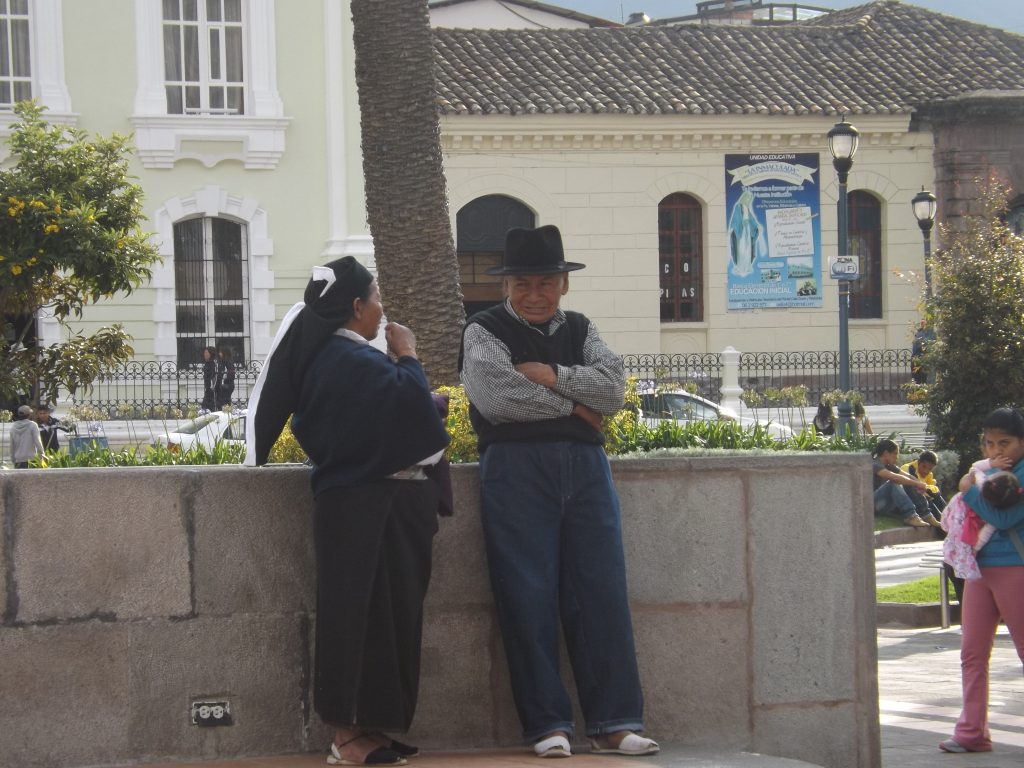
There are also many things to visit around Otavalo, so plan to plan a full day there. The region of Imbabura, where Otavalo is located, is known for its magnificent landscapes, including its lakes, and its viewpoints perfect for photographers. Not far from Otavalo is also the Peguche waterfall. This beautiful 18-meter waterfall is a sacred place for indigenous peoples. It is surrounded by a eucalyptus forest which makes it a very relaxing, shaded and cool setting. The path that leads to the waterfall follows the river: during your walk, you will have the opportunity to stop in a natural pool for swimming. It is therefore a very pleasant walk to add to your visit to the Otavalo market, especially if you are visiting Quito in summer!
5. The Papallacta thermal baths
Want to relax? Plan a day at the Papallacta thermal baths and recharge your batteries in the hotel’s spas, hot springs and thermal pools. The Papallacta thermal baths are located near the Cayambe-Coca ecological reserve, an ideal place for walking in the middle of the forest, while enjoying nature.
How many days to visit Quito?
Visit Quito for a week-end
If you plan to stay only one day in Quito, your visit should be limited to the historic centre of the city, which is both a must and the place where you can see as much as possible in a short time. Visit Ciudad Vieja and Calle La Ronda, Plaza Grande, the churches of San Francisco and the Compañía de Jesús as well as the Basílica del Voto Nacional. To end this busy day, don’t forget to climb Panecillo hill to observe the city from above!
If you plan to visit Quito in two days, you can also plan to spend time in the Floresta and Guapulo districts, but also to visit the San Agustin Convent and the Guayasamín and La Capilla del Hombre museums.
A three-day weekend will give you time to get out of downtown Quito and spend half a day at the Mitad del Mundo. You can also plan a relaxing day in the city’s parks or by taking the cable car to go to Guagua Pichincha. Or plan a day trip to Cotopaxi National Park.
Visit Quito in 5 days
If you have five days in Quito, you will have time to visit the city centre without forgetting anything, but also to make at least two excursions outside the city. Favour visits to the Guagua Pichincha, Cotopaxi and Pululahua volcanoes, which are essential and will offer you a guaranteed change of scenery.
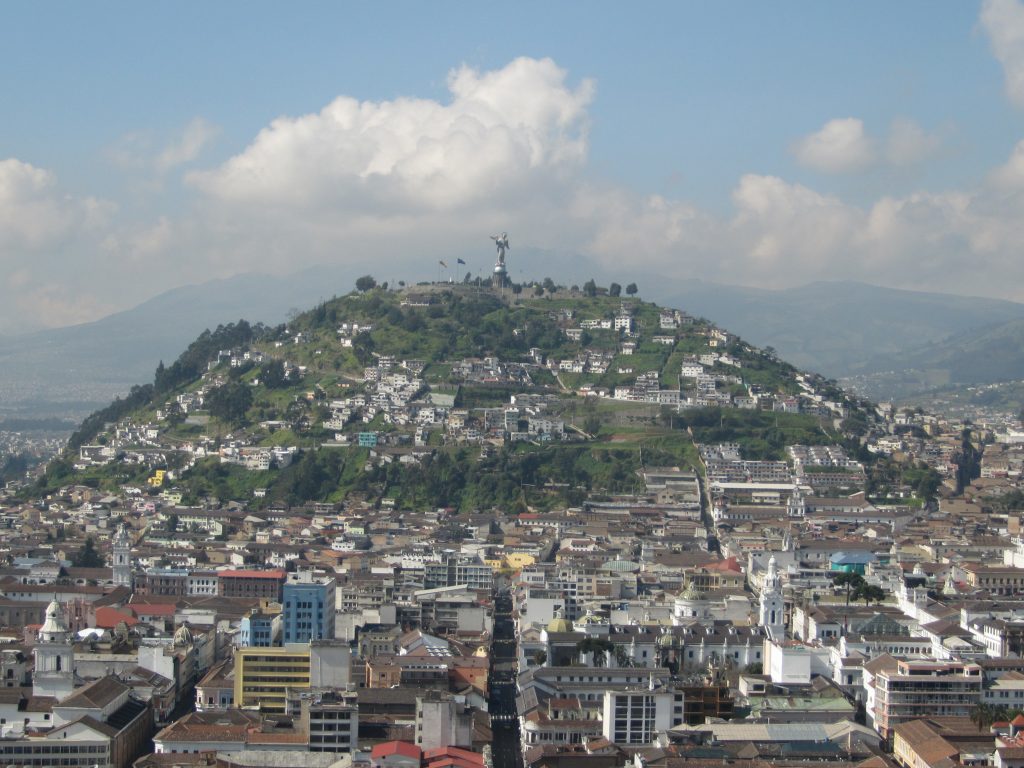
Visit Quito in a week
A week-long stay in Quito will allow you to add tours to your program that take you a little further from the beaten track. Treat yourself to a relaxing day at the Papallacta thermal baths or shop at the Otavalo market.
Good Places to Visit Quito
Where to sleep in Quito?
- Hotel Patio Andaluz (5 stars): this establishment, classified National Treasure of Ecuador, is ideally located in the heart of Ciudad Vieja. It is a magnificent hotel built in colonial style which offers very comfortable rooms, with private bathroom, Wi-Fi connection and television. It is close to many shops and restaurants as well as several tourist attractions.
- Boutique hotel Vista del Angel (4 stars): also located in the heart of Ciudad Vieja, this establishment offers a beautiful view of Quito but also many services such as Wi-Fi, a bar and a restaurant which also serves breakfast. lunch.
- The Boutique Hotel Casa Joaquín (3 stars): located in the heart of the lively “La Mariscal” district, near the historic center of Quito. It is a small luxurious oasis of comfort, peace and tranquility that offers you a delicious blend of European tradition and contemporary trend.
- Hotel San Francisco de Quito (3 stars): this magnificent hotel is located in the city centre in an old colonial house dating from the 17th century. Many services are included, such as a private bathroom, TV and Wi-Fi. Travelers also have access to a restaurant serving regional dishes, breakfast included, as well as a very comfortable terrace. The typical Spanish patio allows you to relax in a pleasant space surrounded by plants while the Quiteño balcony offers a magnificent view of the city.
Where to eat in Quito?
- La Petite Mariscal: although French, this restaurant will serve you typical dishes of Ecuadorian cuisine as beautiful as they are good, like “locro de papas” or “hornado”. On Saturday evening, you can attend jazz or classical concerts while enjoying your dinner.
- ZAZU: this restaurant with a lounge atmosphere is a very popular establishment in Quito, which is always full. The menu offers high-end and creative dishes, with a varied choice of meat and fish. You can also taste different French or Spanish wines there.
- Hasta La Vuelta Señor: this restaurant located in the city center is particularly renowned for its magnificent panorama of the historic centre of Quito and the Panecillo hill. On the menu, there are many typical Ecuadorian dishes such as empanadas of “morochos”, a seed that is eaten a lot in this country. Hasta La Vuelta Señor also offers a varied menu of cocktails and soft drinks, which makes it the perfect meeting place for an evening with friends in the city centre.
- El Sur: this Argentinian restaurant is highly renowned for its meats. The atmosphere and the choice of wines also make it a must.
How to get around during your trip in Quito?
To get around Quito, it is better to forget the car! That’s good if you plan to do responsible tourism: public transport or even the bicycle are the most suitable means of transport.
The bus remains the preferred means of transport in Quito. Bus networks cover the entire city and you will find that taking the bus is as convenient as it is quick and economical. Each bus runs between 6 a.m. and 9 p.m. There are of course bus stops around the city, but if you want to get off somewhere else, you can also ask the driver to stop you in the middle of the street. Buses run on lanes which are entirely reserved for them, which helps to make road traffic more fluid.
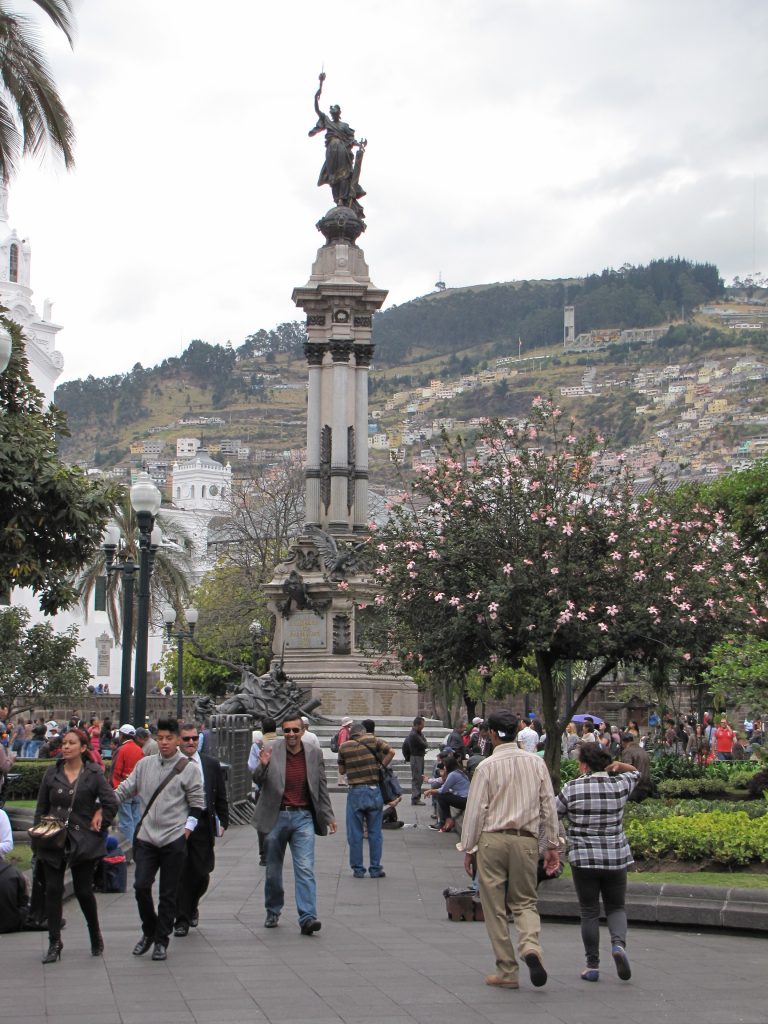
Do you want to do some sport? It is also possible in Quito to rent a bicycle. You should know that on Sunday in Quito, the main streets are closed to car traffic, and this throughout the day. It is therefore easier to cycle.
You can also choose to use the city’s self-service bicycle system, but the procedure to register and be able to borrow a bicycle is quite complicated. If you only stay for a weekend or five days in Quito, it will not be worthwhile to apply for registration.
